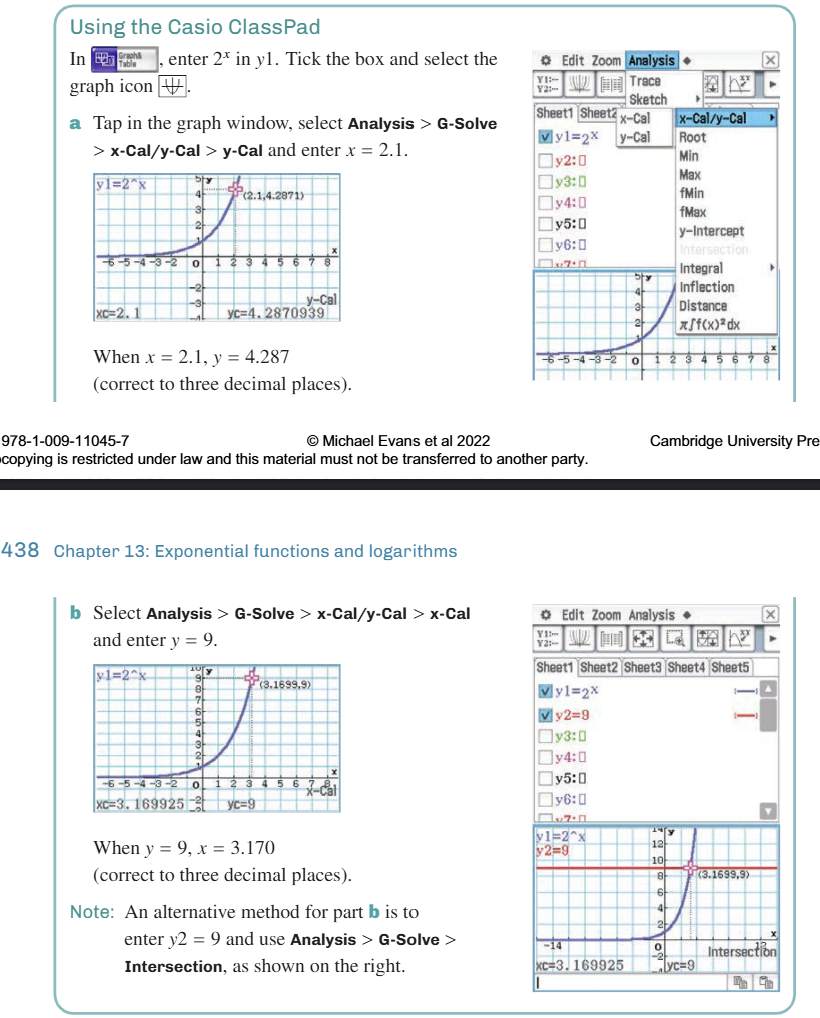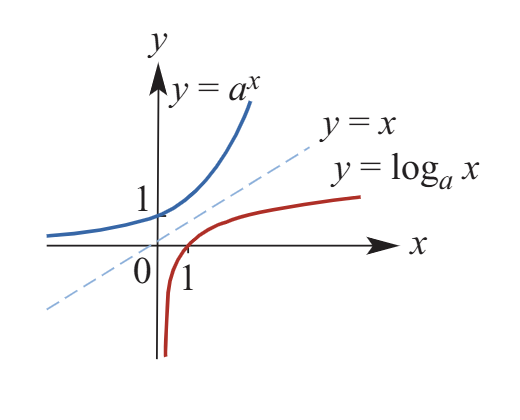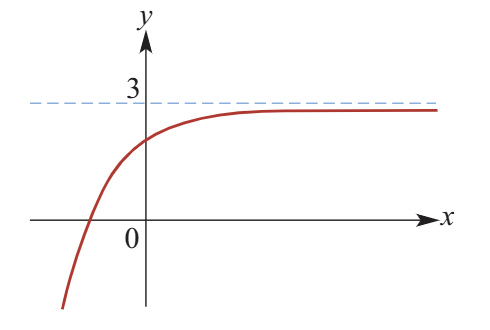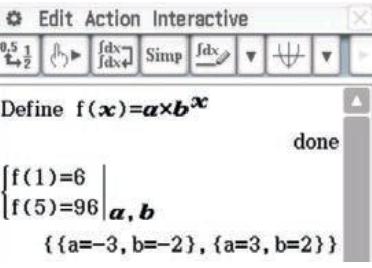Chapter 13 - Exponential Functions and Logarithms
1/16
Earn XP
Description and Tags
Logarithm master in a nutshell!
Name | Mastery | Learn | Test | Matching | Spaced |
|---|
No study sessions yet.
17 Terms
What is a power, base, and exponent?
List the index laws and key rules for powers.
A power is written as aⁿ, where:
a is the base (non-zero)
n is the exponent or index
Index Laws (for a, b ≠ 0 and integers m, n):
a^m \times a^n = a^{m+n}
\frac{a^m}{a^n} = a^{m-n}
(a^m)^n = a^{mn}
(ab)^n = a^n \times b^n
\left(\frac{a}{b}\right)^n = \frac{a^n}{b^n}
Special rules:
a^0 = 1 \quad (a \neq 0)
a^{-n} = \frac{1}{a^n}, \quad \frac{1}{a^{-n}} = a^n
0^n = 0 \quad \text{for } n > 0, \quad 0^0 \text{ is undefined}
What does a^{\frac{1}{n}} mean?
How do index laws extend to rational indices?
For a > 0 and n ∈ ℕ:
a^{\frac{1}{n}} = \sqrt[n]{a} \quad \Rightarrow \quad \left(a^{\frac{1}{n}}\right)^n = aSpecial cases:
0^{\frac{1}{n}} = 0
If n is odd and a < 0, a^{\frac{1}{n}}is defined (result is negative)
Extended Index Laws:
a^{\frac{m}{q}} \times a^{\frac{n}{p}} = a^{\frac{m}{q} + \frac{n}{p}}
\frac{a^{\frac{m}{q}}}{a^{\frac{n}{p}}} = a^{\frac{m}{q} - \frac{n}{p}}
\left(a^{\frac{m}{q}}\right)^{\frac{n}{p}} = a^{\frac{m}{q} \times \frac{n}{p}}
Exponential Functions & Transformations
For y = aˣ where a > 1, the graph has:
The x-axis as an asymptote.
A y-intercept at (0, 1).
Positive y-values with no x-axis intercept.
All graphs of this form are dilations of each other from the y-axis.
For y = aˣ where 0 < a < 1, the graph decays similarly but reflects the opposite behavior.
If f(x) = aˣ and g(x) = a⁻ˣ, then g(x) is the reflection of f(x) in the y-axis.

CAS: Sketching Logarithm Graphs

Solving Exponential Inequalities
To solve an exponential equation without a calculator, express both sides with the same base and equate the exponents (since aˣ = aʸ implies x = y for any base a > 0, a ≠ 1).
Example: 2^{x+1} = 8 \Rightarrow 2^{x+1} = 2^3 \Rightarrow x + 1 = 3 \Rightarrow x = 2
To solve an exponential inequality, follow the same method as an equation and apply the appropriate property:
If a^x > a^y, then:
x > y \quad \text{when} \quad a > 1
x < y \quad \text{when} \quad 0 < a < 1
Laws of Logarithms
For a ∈ R⁺ \ {1}, the logarithm function base a is defined as follows:
aˣ = y is equivalent to logay = x.The expression logay is defined for all positive real numbers y.
To evaluate logay, ask the question: "What power of a gives y?"
Laws of Logarithms:
\log_a(mn) = \log_a m + \log_a n
\log_a\left(\frac{m}{n}\right) = \log_a m - \log_a n
\log_a(m^p) = p \log_a m
\log_a(m^{-1}) = - \log_a m
\log_{\frac{1}{a}}(x) = -\log_a x
Specials:
\log_a 1 = 0 \quad \text{and} \quad \log_a a = 1

Using logarithms to solve exponential equations and inequalities
Key Concepts:
Logarithmic Relationship:
For a, b, c > 0, where a ≠ 1 and b ≠ 1, we have:
\log_a c = \frac{\log_b c}{\log_b a}Logarithms and Exponentials:
If a \in \mathbb{R}^+ \setminus \{1\}and x ∈ R then:a^x = b \Leftrightarrow \log_a b = x
This property is useful for solving exponential equations and inequalities.
Examples:
2^x = 5 \iff x = \log_2 5
2^x \geq 5 \iff x \geq \log_2 5
(0.3)^x = 5 \iff x = \log_{0.3} 5
(0.3)^x \geq 5 \iff x \leq \log_{0.3} 5
Examples of Solving Exponential Equations
Solve 2ˣ = 11:
x = log₂ 11 ≈ 3.45943.Alternative Method:
Taking log₁₀ of both sides:\log_{10}(2^x) = \log_{10} 11 \Rightarrow x \log_{10} 2 = \log_{10} 11 \Rightarrow x = \frac{\log_{10} 11}{\log_{10} 2}
\therefore \log_2 11 = \frac{\log_{10} 11}{\log_{10} 2}
Solve 3²ˣ⁻¹ = 28:
2ˣ - 1 = log₃ 28
2ˣ = 1 + log₃ 28
x ≈ 2.017.
Solve the inequality 0.7ˣ ≥ 0.3:
Taking log₁₀ of both sides:x \log_{10} 0.7 \geq \log_{10} 0.3 \quad \Rightarrow \quad x \leq \frac{\log_{10} 0.3}{\log_{10} 0.7}
x ≈ 3.376 (direction of inequality reversed since log₁₀ 0.7 < 0).
Alternatively, solve as:
x ≤ log₀.₇ 0.3.
Exponential Graphs and Logarithms
Graph of f(x) = 2 × 10ˣ − 4:
Horizontal asymptote at y = −4 as x → −∞.
The y-axis intercept is f(0) = −2.
The x-axis intercept occurs when f(x) = 0:
2 × 10ˣ − 4 = 0 → x = log₁₀ 2 ≈ 0.3010.
📊 Properties of Exponential vs Logarithmic Functions
Property | y = aˣ (Exponential) | y = logₐx (Logarithmic) |
|---|---|---|
Domain | ℝ | ℝ⁺ (x > 0) |
Range | ℝ⁺ (y > 0) | ℝ |
Key Point | a⁰ = 1 | logₐ1 = 0 |
End Behavior | x → −∞, y → 0⁺ | x → 0⁺, y → −∞ |
Asymptote | y = 0 | x = 0 |

🔄 Transformations Summary (General Form)
Type | Example | Effect |
|---|---|---|
Shift Right | y = logₐ(x − h) | → right h units |
Shift Left | y = logₐ(x + h) | → left h units |
Shift Up | y = logₐ(x) + k | ↑ up k units |
Shift Down | y = logₐ(x) − k | ↓ down k units |
Stretch (vertical) | y = a·logₐ(x), a > 1 | ↑ vertical stretch by factor a |
Compress (vertical) | y = a·logₐ(x), 0 < a < 1 | ↓ vertical compression by factor a |
Horizontal Compress | y = logₐ(bx), b > 1 | → compress across y-axis (divide x by b) |
Horizontal Stretch | y = logₐ(bx), 0 < b < 1 | → stretch across y-axis (multiply x by 1/b) |
Reflect in x-axis | y = −logₐ(x) | ↩ reflect in x-axis |
Reflect in y-axis | y = logₐ(−x) | ↪ reflect in y-axis |
🔁 Inverse Functions:
y = a^x \iff x = \log_a y
↔ Reflect across the line y = x
If a > 0 and a ≠ 1, then:
\log_a (a^x) = x \quad \text{for all real } x
a^{\log_a x} = x \quad \text{for all positive } x
Exponential Modelling (General)
In exponential change, let A be the quantity at time t. The general formula is:
A = A_0 b^t
where A₀ is the initial quantity and b is a positive constant.
If b > 1, the model represents growth, such as:
Growth of cells
Population growth
Continuously compounded interest
If b < 1, the model represents decay, such as:
Radioactive decay
Cooling of materials
Application and Variants of the Model
Cell Growth Formula:
For bacterial growth, the formula N = N_0 2^{\frac{t}{T_D}}is used, where Tᴰ is the generation time.Radioactive Decay Formula:
The formula A = A_0 2^{-kt} describes radioactive decay, where k is the decay constant. Half - life may be used to model this A = A_0 \left(\frac{1}{2}\right)^nPopulation Growth:
A = A_0 \left(1 + \frac{r}{100}\right)^t
Where:A = population
A₀ = initial population
r = rate of growth/decay
t = time taken
Limiting Values
In some exponential functions, a limiting value L is approached but never reached. Using the concept of limit, the formula for this behavior can be written as:
\lim_{x \to \infty} f(x) = L
where f(x) approaches L as x increases but never actually reaches it.

CAS: Determining Rules
Define f(x) = a × bx.
Solve the simultaneous equations (in example).

CAS: Fitting Data (Example)
Enter the data into List1 and List2.
Set the graph type to Scatter and assign List1 and List2 to the graph.
Tap Set to display the scatter plot.
Select Calc > Regression > abExponential Reg and tap OK to confirm.
The exponential function w = 1.55(1.22)ᵐ models Somu’s weight.
Tap OK to view the graph of the regression curve.

Where are the asymptotes for transformed functions y = a(x-h) ± k and y = logₐ(x ± h) ± k?
Exponential y = a(x-h) ± k → Horizontal asymptote y = k
Logarithmic y = logₐ(x ± h) ± k → Vertical asymptote x = ∓h ← when x + h = 0, x = -h